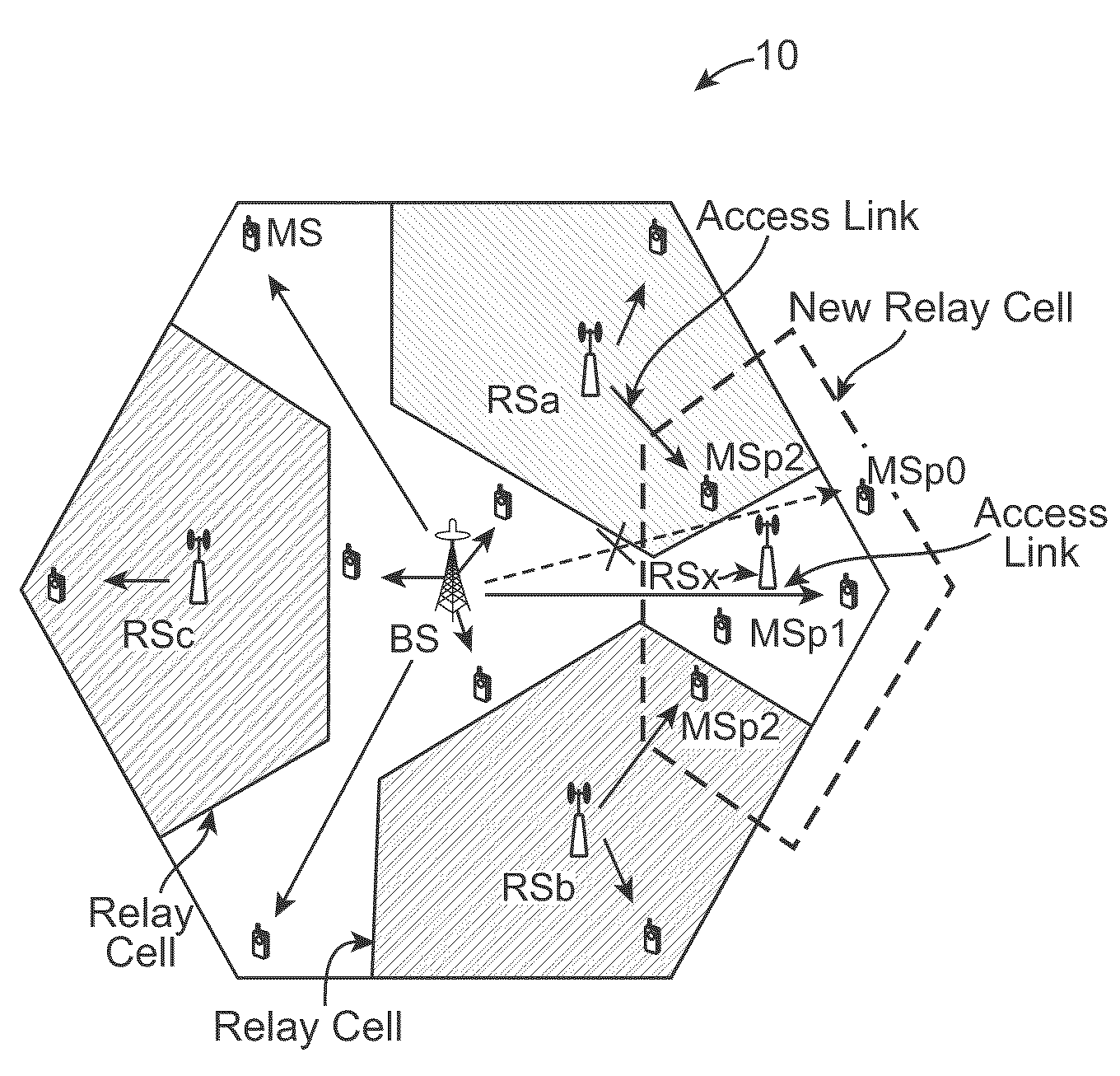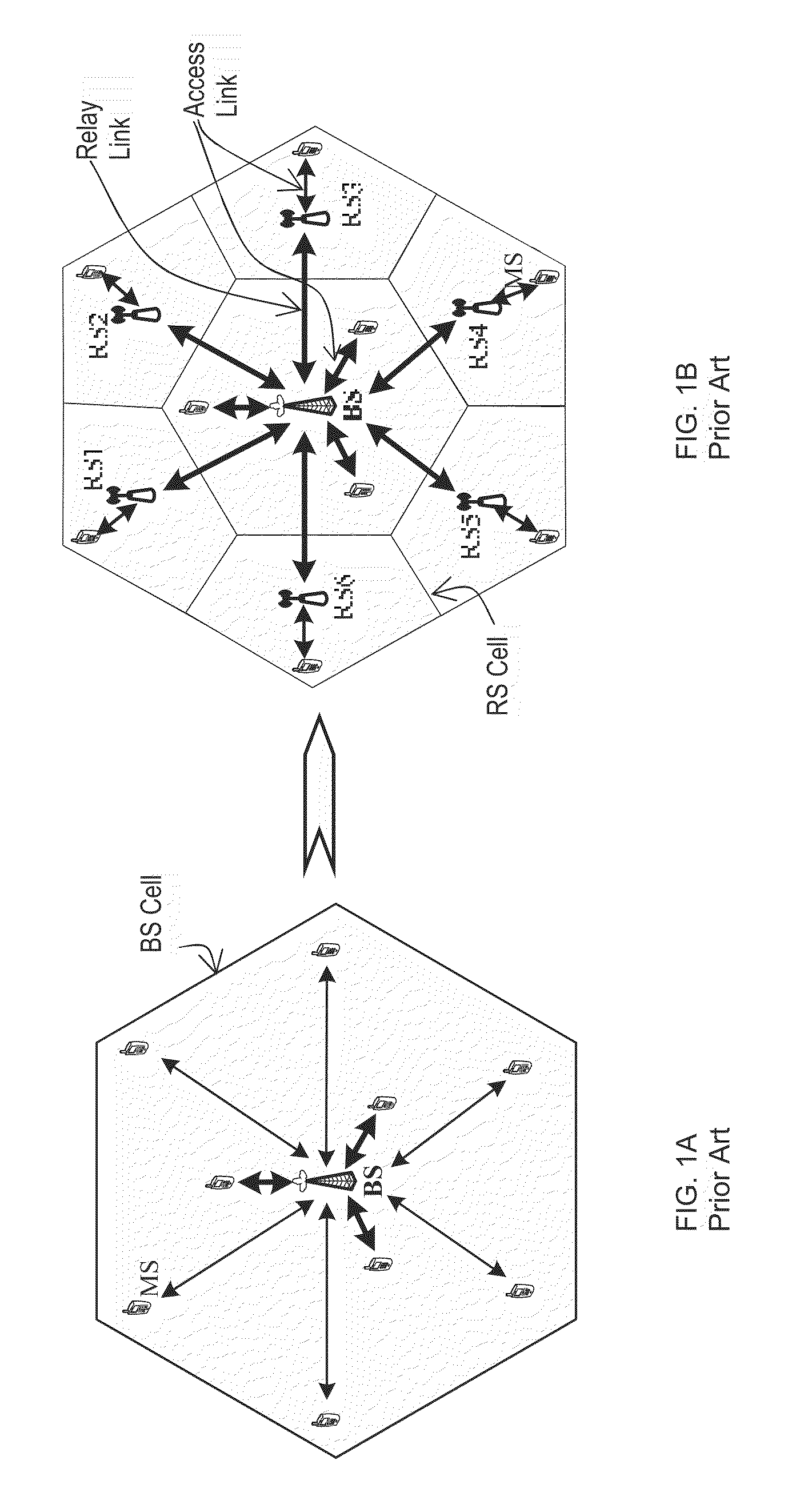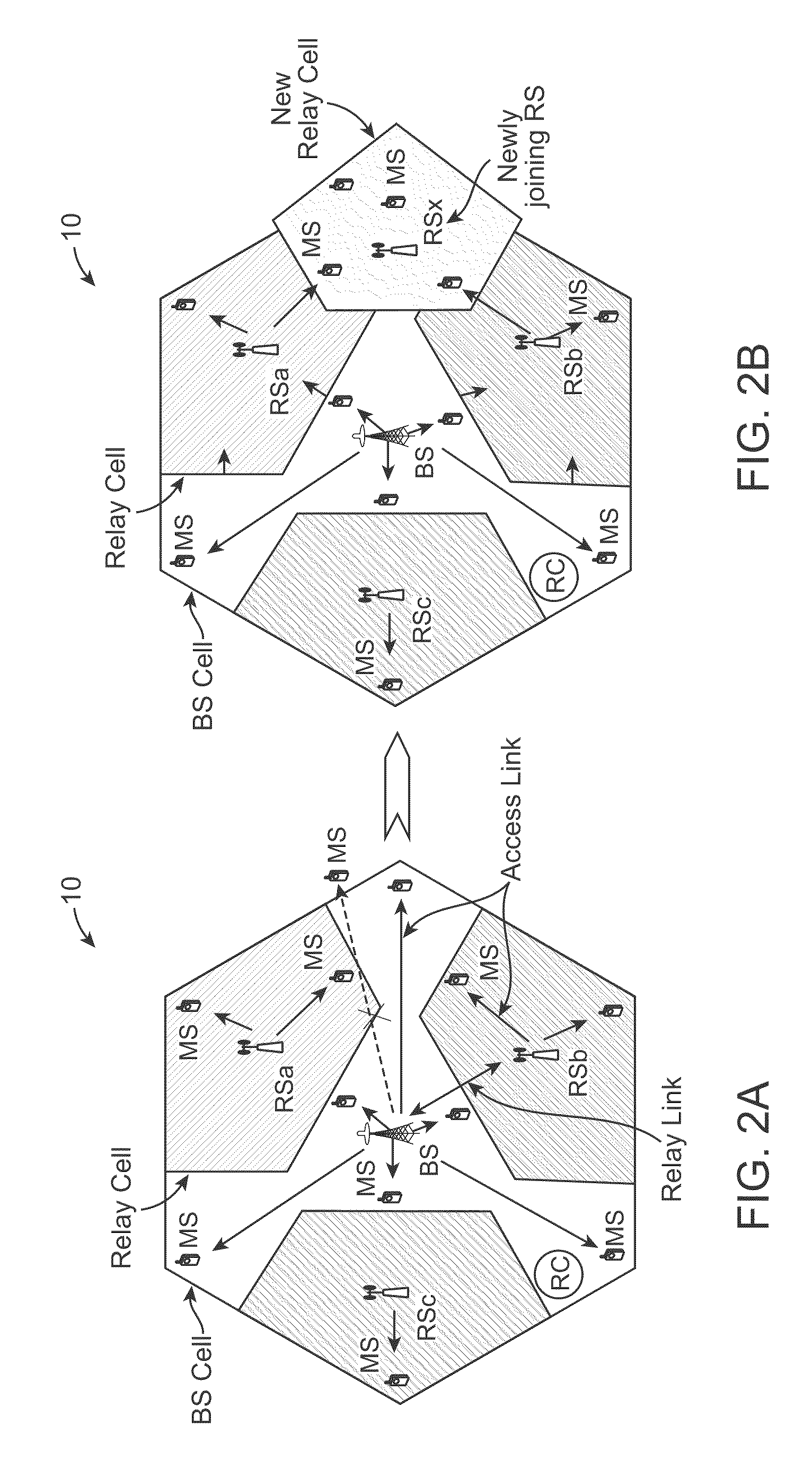Adaptive resource allocation protocol for newly joining relay stations in relay enhanced cellular systems
a resource allocation and relay technology, applied in the field of wireless cellular communication, can solve the problems of resource reuse and new challenges in subcarrier allocation, and achieve the effect of enhancing the cellular communication system and reducing the impact of existing stations
- Summary
- Abstract
- Description
- Claims
- Application Information
AI Technical Summary
Benefits of technology
Problems solved by technology
Method used
Image
Examples
Embodiment Construction
[0027]The present invention provides a method and system for adaptive resource allocation for newly joining relay stations (RSs) in a relay enhanced cellular system (REC). The resources are assigned essentially in an optimal manner.
[0028]In a REC system, RSs are deployed to improve wireless (e.g., radio frequency) link quality and / or extend cell coverage. RSs may be added to the REC system at initial cell planning stage, or in an on-demand (ad-hoc) manner. When a new RS is added to an operating REC system on-demand, according to the invention, a resource controller responsible for subcarrier allocation assigns sufficient resources to the new RS to support MSs identified to be serviceable by the new RS. The MS station identification (selection) and resource assignment enable better utilization of the REC system resources, thus enhancing overall REC system capacity, and cause essentially minimum impact on the existing stations in the REC system (i.e., reduce impact of resource allocat...
PUM
 Login to View More
Login to View More Abstract
Description
Claims
Application Information
 Login to View More
Login to View More - R&D
- Intellectual Property
- Life Sciences
- Materials
- Tech Scout
- Unparalleled Data Quality
- Higher Quality Content
- 60% Fewer Hallucinations
Browse by: Latest US Patents, China's latest patents, Technical Efficacy Thesaurus, Application Domain, Technology Topic, Popular Technical Reports.
© 2025 PatSnap. All rights reserved.Legal|Privacy policy|Modern Slavery Act Transparency Statement|Sitemap|About US| Contact US: help@patsnap.com



